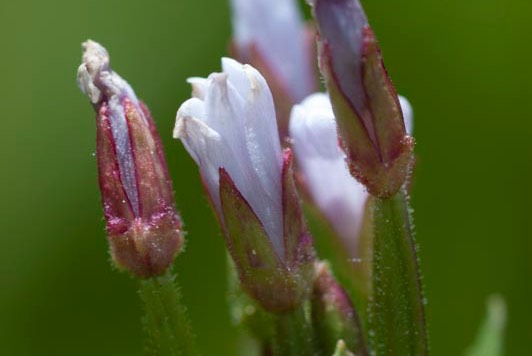Epilobium hornemannii
(Hornemann's Willowherb)
| Scientific Name | Epilobium hornemannii | USDA PLANTS Symbol | EPHOH |
| Common Name | Hornemann's Willowherb | ITIS Taxonomic Serial No. | 27307 |
| Family | Onagraceae (Evening Primrose) | SEINet Reference |
Click Here |
| Description |
Life zones and habitat: Montane to alpine (8000 to 12000 ft.); moist areas along streambanks and in meadows. Plant: Leafy perennial 4 to 20 inches tall; stems are green or tan to reddish green, ascending or erect, usually simple and not branched, with small hairs in lines from leaf bases, becoming glandular above. Leaves: Lower leaves are opposite or alternate and elliptic to spatulate; upper leaves are opposite and ovate to lanceolate; blades are 5/8 to 2-1/2 inches long; very short (~1/4 inch) or no petioles; edges of lower leaves are usually smooth, becoming denticulate upwards with 10 to 25 teeth per side; surfaces have veins that are often inconspicuous, 4 to 7 per side. Inflorescence: Small pink to rose-purple flowers, rarely white, on stalks 1/4 to 2 inches long, each with 4 notched petals 3 to 10 mm long; anthers are light yellow, stigma is cream; sepals more than half the length of petals, sometimes red-tipped or bright red. Bloom Period: June to August. References: "Flora of Colorado" by Jennifer Ackerfield, Flora of North America, Jepson eFlora and SW Colorado Wildflowers. |
BONAP Distribution Map Map Color Key |
Colorado Status: Native |
© Tom Lebsack 2025
Banner photo: Castilleja rhexifolia and a brewing storm over the San Juan Mountains
I try to provide accurate, up-to-date, and relevant information, but cannot guarantee the completeness or accuracy of any information presented on this website. I use authoritative references to insure high standards of accuracy and review and update the information frequently.



